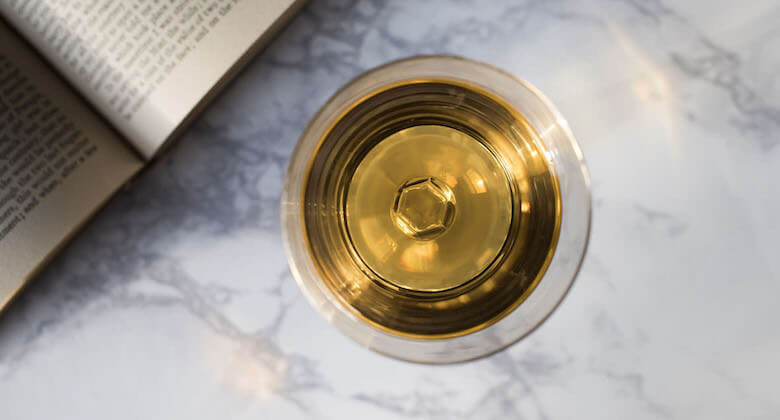
New York might be rolling in cider, but some producers are experimenting with a spirit that doesn’t fall too far from the tree. Small-batch pommeau, an apple brandy and cider cordial traditionally from Normandy and Brittany, France, is quietly emerging from a handful of upstate cidermakers.
Originally created as a method to make use of less-than-stellar Calvados (a particular French-style of apple brandy), pommeau is now considered an ingrained spirit, receiving its first AOC distinction only relatively recently in 1991. Aged in French oak barrels for 30-plus months, the European version is marked by its lower ABV (around 18 to 25 percent), deeper, caramel notes and smooth finish. Think of it like a more saccharine, viscous Calvados without the burn that can be served neat and slightly chilled like a port, or as a Calvados substitute in cocktails.
Stateside, the new generation of pommeau makers aren’t bound by rules, creating their own interpretations. Some are a combination of methods (barrel-aged and non-barrel aged), and brighter and more fruit-forward, like South Hill Cider in Ithaca. Black Diamond, also in Ithaca, reaches for Porter’s Perfection, an old English bittersweet apple and oak-aged apple eau de vie, to make their Porter’s Pommeau. Its color can fall anywhere in the spectrum from a light, golden hue to deeper, caramel tones.
Orchard Hill in New Hampton was among the first American pommeau pioneers, beginning production in 2005 as a distillation project before turning into a cidery due to former state winery and distillery separation license restrictions (these regulations are currently changing under the 2016 Farm Distillery Law, allowing distilleries and wineries to operate on the same site).
“We started with the vague purpose of making a value-added apple project and made decisions to make pommeau purposefully along the way,” says Orchard Hill partner Karl duHoffmann. “Having visited Normandy and spent a few days touring a Calvados distillery, I was struck by flavor profile. No one was making pommeau, and most of these beverage categories are very crowded, so we would be excited to break new ground.”
A decade later, pommeau is still doing so, joined by only a handful of other small producers often overlooked among the explosion of hard ciders on the market. But much like the increased popularity of applejack and Calvados, don’t be surprised to see more of it heading your way.
Pommeau to know
Keep an eye out for these up-and-coming labels:
Black Diamond Cider Porter’s Pommeau 2015
Trumansburg, NY
Blend: 80 percent European Bittersharps, 20 percent Jonagold apples oak-aged with Porter’s Perfection.
Tasting notes: Ripe apples and vanilla.
Kite and String Pommeau 2016
Interlaken, NY
Blend: 70 percent Golden Russet, Dabinett and Margil juices, and 30 percent apple spirits, aged in American oak bourbon and whiskey barrels anywhere between three and 12 months.
Tasting notes: Dark cherry, anise and bourbon.
Orchard Hill Ten66
New Hampton, NY
Blend: 10 to 12 apple varieties of the 75 available at Soons Orchard, with a McIntosh-heavy and high-acid apple brandy distilled by Black Dirt Distillery, then aged in French oak wine barrels. Aged anywhere from two to four years (Verde) and four to nine years (Reserve Red Label, Reserve Single Barrel Gold Label).
Tasting notes: Apple tarte tatin, vanilla and spice.
South Hill Cider Pommeau
Ithaca, NY
Blend: Unidentified homestead trees, crabapples, Bittersweets, Northern Spy and McIntosh apples. Brandy is aged for one year in American oak, then the juice and brandy are partially aged in French oak for up to three years and partially in stainless steel for about nine months.
Tasting notes: Honey, clove, nutmeg, amaretto and plum.



